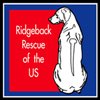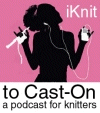I decided it was time to do a quick little 101 on enrichment since it is something that is bound to come up in my posts.
What is enrichment? According to the
Enrichment Committee of AAZK enrichment is: "achieved by adding to a captive animal’s environment or by modifying that environment to stimulate behaviors resembling those of a healthy wild animal (Shepherdson, 1992a.) Enrichment is intended to encourage behaviors that are appropriate for the species, and that satisfy an animal’s physical and psychological needs."
Enrichment encompasses many things. It can be a sound, a taste, a touch, something seen, a toy, etc. Giving a domestic cat a fake mouse or catnip is enrichment. These are things that give the animal something to do or see or smell. Taking a dog to the park is enrichment. Just imagine all the different sights, sounds, smells, etc that the dog is experiencing while at the park.
Any animal can be enriched (from an ant to an elephant). At the zoo we use alot of enrichment ranging from perfumes/extracts/spices to large pieces of PVC wrapped in rope. One important thing about enrichment is it needs to change frequently. If we left the large piece of PVC wrapped in rope in the tiger exhibit for a week, the tigers would probably play with it for the first day or two but would then get bored with it. It wasn't new anymore. In zoo language - it's become furniture. It's always there, never changing. So, we rotate enrichment.
In the department I work in (Carnivores) we have different categories, including:
toy (balls, boxes, shredded paper, pvc with rope, syrup barrels, etc),
sound (radio, cds of animal sounds, cowbells, whistles, etc),
smell (perfumes, colognes, spices, extracts, etc),
food (whole prey, bones, fish, canned chicken, canned tuna, ice pops, etc. This also includes presenting the food differently - ie the animal usually eats ground meat so one day you give them a large chunk of meat),
tactile (cocoa mats, shredded paper, hay, fire hose, browse etc),
exercise (chasing a remote control car that is outside the exhibit), running with a keeper (who is outside the exhibit), etc), and
visual (a mirror, a bird feeder placed outside a cat exhibit, someone walking by with an umbrella, etc). These categories are rotated on a daily basis. And yes, sometimes animals get enriched with several categories in one day - the guests themselves are enrichment to the animals. Training is also enrichment.
All these things keep the animals interested, active, engaged in their surroundings, and, in most cases, exhibiting natural behaviors. The perfume, to a cat (or bear, or wolf), replicates another animal coming through their territory. Therefore, the cat (bear or wolf) walks up to each spot with perfume and marks over it (cheek rubbing, urinating, etc) thereby letting everyone know this is his (or her) spot.
Domestic animals, especially dogs, cats, birds and horses, are enriched in ways you don't even realize. When you get home from work, you bring in all these smells from places you've been. If your dog or cat are anything like mine they're probably sniffing shoes, clothes etc the minute you walk in the door. :) Bones, toys, playing with you, catnip, the fishing pole toy, buster cube, kong toy with frozen yogurt, etc are all what I would consider enrichment. You are giving the animal something to do either physically or mentally or both.
So, that is enrichment. Hopefully it makes sense and doesn't confuse anybody further. For more (or better) explanation, or to see some examples, please visit
AAZK's Enrichment Committee or
The Association of Zoos and Aquariums Enrichment Page.




































